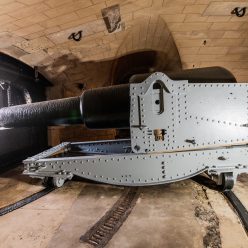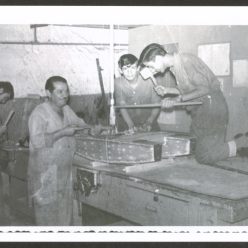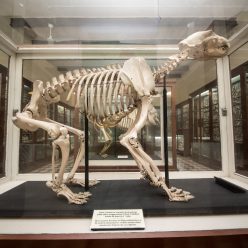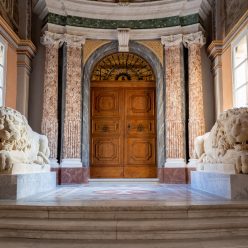Heritage Malta is giving the public a rare opportunity to see the Etruscan Urns in the national collection which are normally kept in storage. These urns are currently on display, as part of a temporary exhibition, at the National Museum of Archaeology.
 The national collection includes artefacts which were excavated locally and others which were donated to the museum throughout the years. In the case of the latter, not all originate from Malta, and due to space restrictions are not chosen for permanent displays. Heritage Malta’s ethos is to be accessible as possible and at times, artefacts such as these are displayed in temporary exhibitions.
The national collection includes artefacts which were excavated locally and others which were donated to the museum throughout the years. In the case of the latter, not all originate from Malta, and due to space restrictions are not chosen for permanent displays. Heritage Malta’s ethos is to be accessible as possible and at times, artefacts such as these are displayed in temporary exhibitions.
These four urns, one lid and one front piece were stored together with a typewritten plaque with the donor’s name, Mr Francesco They, accompanied with a note stating that they were probably imported to Malta in the 19th century. These urns were commonly used by the Etruscans who flourished along the Italian coast just north of Rome between the 8th and 1st Centuries BC.
The Etruscans, who both inhumed and cremated their dead until the end of the 1st Century BC, were renowned for producing this type of memorial from the late 4th Century BC. The Etruscans deposited ashes in a range of containers, cinerary urns being one of them. The Etruscans seem to have been also the first to invent the custom of reproducing figures on the lids of cinerary urns, an influence which was later taken up by the Romans.
The Etruscans interacted with both the Greeks in Southern Italy and the Romans in central Italy, and the imagery on these urns showed that exchange of ideas flowed freely between artists of these cultures.
These urns are currently on display at the National Museum of Archaeology, until the 23rd of September. Admission to view them exhibition is free of charge. Open daily between 0900hrs and 1800hrs.
Latest News
Press Releases | 19th April 2024
A Vibrant Special Opening at Fort Delimara
Press Releases | 8th April 2024
Objects Missing From the Grand Master’s Palace




